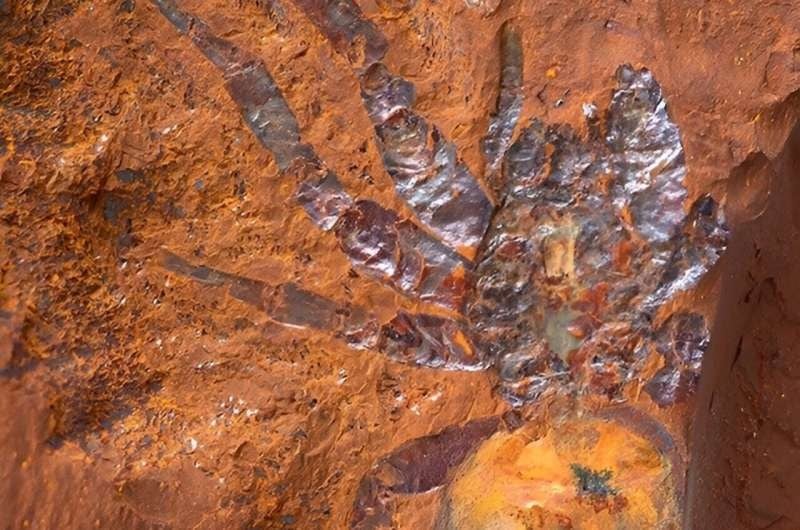
Australian researchers recently unveiled an exceptionally well-preserved fossil of an ancient spider. The arachnid roamed the continent between 16 million and 11 million years ago. Megamonodontium mccluskyi was unearthed at the McGraths Flat in New South Wales. Once covered with lush rainforests, the site has an abundance of insect and plant fossils that existed during the Miocene era. Many are new to science.
The team, led by Australian Museum paleontologist Dr. Matthew McCurry, suggests that the spider was likely a member of the Barychelidae family. Its present-day counterparts, the brush-footed trapdoor spiders, thrive in the rainforests of Singapore, Indonesia, and Papua New Guinea. However, they are about one-fifth the size of their ancient relative, which measured about 2 inches (50 mm) from toe to toe. For comparison, that is about the size of your palm!

The scientists published their findings in the Zoological Journal of the Linnean Society on September 20, 2023. They assert that the discovery is important for several reasons. M. mccluskyi is the first known member of the Barychelidae family to be found. Additionally, it is one of just four spider fossils ever documented in Australia. Spider fossils are rare worldwide because soft-bodied creatures do not fossilize easily. Fossilization typically favors the preservation of more resilient structures, such as bones.
"That is why this discovery is so significant. It reveals new information about the extinction of spiders and fills a gap in our understanding of the past," said team member Simon McClusky, after whom the spider was named.
Resources: ZMEscience.com, CNN.com, Australian.museum
